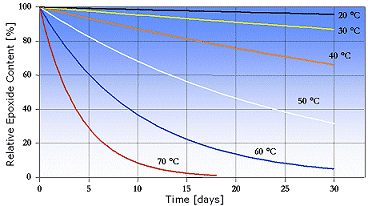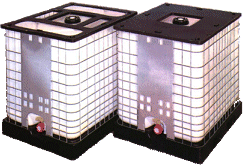QUAB 151 is available as aqueous solution with a total active weight concentration of 71-75% (total of epoxide and chlorohydrin, calculated as epoxide).
QUAB 151
Aqueous solution of the active substance 2,3-epoxypropyltrimethylammonium chloride (glycidyltrimethylammonium chloride; commonly referred to as epoxide).
- Physical & Chemical Data
- Storage
- Materials For Transport & Storage
- Packaging
- Specifications
- Safety & Handling
Empirical Formula
CAS.-No.
EINECS-No.
Molecular weight
Appearance
Odor
Density (20 °C)
Flash point (Abel-Pensky)
75 wt% : 155°C (311 °F)
Vapor pressure (20 °C)
Viscosity (20 °C)
Miscibility
QUAB 151 should be stored at temperatures ranging between 10 and 20 °C. Viscosity increases exponentially at temperatures < 10 °C and solids may crystallize.
The stability of QUAB 151 deteriorates with increasing storage temperatures due to hydrolysis of the epoxide. The epoxide content in QUAB 151 decreases at 20 °C by approximately 3.5 %. To preserve product quality, storage temperatures should not be allowed to exceed 20 °C.

Storage temperatures exceeding 35 °C must be avoided in all cases since this may cause uncontrolled exothermic self-decomposition of QUAB 151. Measures to stabilize the product should already be taken when the product goes beyond the target set point temperature of the cooling system.
Storage tanks with an external cooling unit made of any of the materials listed under transport are recommended for storing QUAB 151. Storage in airconditioned rooms is also possible provided suitable measuring and control devices are used to control air and product temperature. Monitoring product temperature is mandatory if cooling equipment fails or is shut down for a prolonged period. Monitoring is also recommended to prevent an uncontrollable self-accelerated decomposition of QUAB 151. Additional information and storage guidelines for QUAB 151 are available upon request.

Stainless steel, types SS 304 L, SS 321 (both DIN 1.4541), SS 316 L, and SS 316 TI (both DIN 1.4571), can be used for Transport and storage of QUAB 151. Pickling of containers and pipes with special attention to welds is recommended. Please contact us for further recommendations.
The plastic and rubber materials recommended for QUAB 188 can also be used for QUAB 151.

PE-Drums
IBC
Tank Truck

Chlorohydrin Content
Epoxide Content
Active Content* (as epoxide)
Glycol Content**
Epichlorohydrin (ECH)
pH***
Additional information (not part of the specifications)
Water
* Epoxide and chlorohydrin together amount to the active content
** Quab-glycol is inert in cationization reactions
*** Undiluted solution
For detailed safety, handling, and toxicology information, see the corresponding material safety data sheets, which are available upon request.
With life-time dermal exposure to the substance in mice, QUAB 151 caused tumors of the skin, the lungs and the mammary glands. Skin sensitization has been observed in animal tests and in humans. In the animal test with the rat (28 days) repeated exposure (oral) caused damage to the kidneys.
The MAK List 1995 of the Deutsche Forschungsgemeinschaft (DFG) [German Research Community] has listed glycidyltrimethylammonium chloride (QUAB 151) in Group III A2, Carcinogenic Substances. The substance also carries the annotation H (danger of absorption through the skin) and S (danger of sensitization).
Certain handling measures are required based on the toxicological properties (see section entitled “Toxicology”). At a minimum, these measures include:
- Avoid all contact with eyes, skin and mucous membranes.
- Use appropriate protection measures and personal protective equipment (eye, body and hand protection)!
- Do not reuse disposable gloves (PE).
- After contamination, change gloves immediately to prevent accidental contact of product with skin, mucous membranes or clothing.
- Do not contact with alkalis.
We recommend that you request and follow the QUAB safety instructions. QUAB personnel will conduct safety trainings at customer’s facility upon request.



